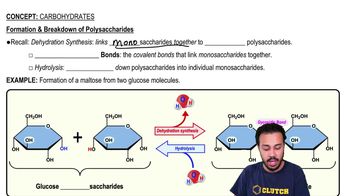Here are the essential concepts you must grasp in order to answer the question correctly.
Bacterial Metabolism
Bacterial metabolism refers to the biochemical processes that bacteria use to convert nutrients into energy and cellular components. At lower temperatures, such as those found in refrigeration and freezing, the metabolic activities of bacteria slow down significantly. This reduction in metabolic rate decreases the growth and reproduction of bacteria, thereby extending the shelf life of food.
Recommended video:
Introduction to Metabolism
Psychrophiles and Psychrotrophs
Psychrophiles and psychrotrophs are types of bacteria that thrive at low temperatures. Psychrophiles prefer temperatures below 15°C, while psychrotrophs can grow at refrigeration temperatures but have optimal growth at warmer conditions. Understanding these groups is crucial because they can still cause spoilage in refrigerated foods, although freezing effectively halts their activity.
Recommended video:
How to Memorize the Classification of Microbes by Growth Temperatures
Ice Crystal Formation
Ice crystal formation during freezing can damage bacterial cells and disrupt their metabolic functions. When water in food freezes, it forms ice crystals that can puncture cell membranes, leading to cell lysis. This physical damage, combined with the cessation of metabolic activity, contributes to the preservation of food by reducing the viability of bacteria.
Recommended video:
Formation & Breakdown of Polysaccharides




